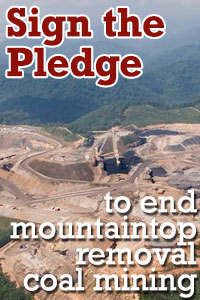Methodist Church on Global Warming
 The United Methodist Church General Conference is an international church conference that meets every 4 years; it is the only body that can officially speak for the church.
The United Methodist Church General Conference is an international church conference that meets every 4 years; it is the only body that can officially speak for the church.
In response to global climate change, the following text added to the “United Methodist Social Principles” document by the General Conference of 2008.
Global Climate Stewardship (New Social Principle)
160.D – We acknowledge the global impact of humanity’s disregard for God’s creation. Rampant industrialization and the corresponding increase in the use of fossil fuels have led to a buildup of pollutants in the earth’s atmosphere. These “greenhouse gas” emissions threaten to alter dramatically the earth’s climate for generations to come with severe environmental, economic, and social implications. The adverse impacts of global climate change disproportionately affect individuals and nations least responsible for emissions. We therefore support efforts of all governments to require mandatory reductions in greenhouse gas emissions and call on individuals, congregations, businesses, industries, and communities to reduce their emissions.
Resolution 1031 – RESOLUTION ON GLOBAL WARMING
WHEREAS, global warming is an issue of concern, interest, and action among many United Methodists; and
WHEREAS, global warming is “an average increase in the temperature of the atmosphere near the Earth’s surface and in the troposphere
WHEREAS, a greenhouse gas is “any of the atmospheric gases which contribute to the greenhouse effect.”3 Carbon dioxide, water vapor, and methane are three such examples. The greenhouse effect is “the overall warming of the earth’s lower atmosphere
WHEREAS, the largest international body critically examining issues related to greenhouse gases and global warming is the Intergovernmental Panel on Climate Change (IPCC). In their 2007 preliminary report, the IPCC reported, with a certainty of 90 percent, that this increase in human-produced greenhouse gases has increased the greenhouse effect, thereby contributing to Earth’s recent warming.8 Prior to the Industrial Revolution, levels of carbon dioxide, the most significant greenhouse gas, were about 280 parts per million by volume (ppmv), and current levels are about 370 ppmv.9 The concentration of CO2 in our atmosphere today has not been exceeded in the last 420,000 years
WHEREAS, such an increase in future carbon dioxide concentration is very likely to cause significant warming of the Earth’s climate, resulting in a variety of changes.12 Scientists have observed some changes already occurring, including: sea level rise, shrinking glaciers, changes in the range and distribution of plants and animals, trees blooming earlier, lengthening of growing seasons, ice on rivers and lakes freezing later and breaking up earlier, and thawing of permafrost.13 Some of these changes, and other changes not mentioned, may have significant detrimental impacts upon human populations in the future; and unfortunately, many of the impacts may occur in nations with the least ability to adapt, given the economic and social challenges within those nations. Now therefore, be it resolved, that as a global church community, we call on our members to reduce human-related outputs of greenhouse gases; Be it further resolved, that members should make an effort to learn about human production and release of greenhouse gases and evaluate their own lifestyles to identify areas where reductions in production and release of greenhouse gases can be made. There are many informative resources for learning how one can reduce his/her greenhouse-gas impact; Be it further resolved, that members should also work to make their own congregations more aware of the issue of global warming and create policies and practices which reduce greenhouse gas emissions from congregational infrastructure (church buildings, parsonages, vehicles, etc.); Be it further resolved, that members call on the nations of the world to require reductions in greenhouse emissions usig the most efficient and cost-effective mechanisms;
Fiinally, be it resolved, that members should also attempt to educate others outside their church communities on the need to take action on this issue.
References
1. U.S. Environmental Protection Agency, Climate Change: Basic Information, December 2006.
2. Ibid.
3. The Free Dictionary by Farlex, Definition of global warming as found in the American Heritage Dictionary of the English Language (Fourth Edition), 2003.
4. The Weather Channel, Weather Glossary, 2007.
5. National Oceanic and Atmospheric Administration, Global Warming: Frequently Asked Questions, February 2006.
6. Ibid.
7. Ibid.
8. Intergovernmental Panel on Climate Change, Climate Change 2007: The Physical Science Basis: Summary for Policymakers, 2007. http://www.ipcc.ch/SPM2feb07.pdf
9. National Oceanic and Atmospheric Administration, Global Warming: Frequently Asked Questions, February 2006.
10. Ibid.
11. Ibid.
12. Intergovernmental Panel on Climate Change, Climate Change 2007: The Physical Science Basis: Summary for Policymakers, 2007. http://www.ipcc.ch/SPM2feb07.pdf
13. U.S. Environmental Protection Agency, Climate Change: Basic Information, December 2006.









